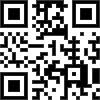Policy of screening for plagiarism
Only original materials that have not been published before and were not submitted for publication in another journal are accepted for publication.
The Editorial Office uses the software to identify text borrowings in the submitted manuscripts: Detector Plagiarist, Antiplagiat, eTXT. Manuscripts in which plagiarism or textual borrowings are found without reference to the original source are rejected by the editorial office for publication in the journal.
Plagiarism before publication
The Editorial Office of the journal substantially analyzes any case of plagiarism. If plagiarism or textual borrowing are found by editors or reviewers at any stage of the manuscript publication, the author (authors) is warned about the need to rewrite the text or make an effort to the original source. If plagiarism is more than 25% - the article may be rejected.
Plagiarism testing policy
The percentage of plagiarism is calculated by software and is also estimated by the editorial office.
Manuscripts in which plagiarism is found are processed on the basis of the amount of plagiarism found in the manuscript: if less than 25% of plagiarism - the manuscript is immediately sent to authors to view the content and if more than 25% of plagiarism - the manuscript is rejected without editorial review. Authors are advised to review the article.
Plagiarism after publication
If plagiarism is found after publication then the editorial office analyzes this fact. If plagiarism is found, the editorial office will contact the author. Pages that contain plagiarism will be marked in a PDF file. Depending on the scale of the plagiarism, the document can also be withdrawn (deleted).
The authors are responsible for receiving permission to copyright for the reproduction of illustrations, tables, drawings taken from other authors and / or sources. The permission should be placed below each element.
Autoplagiarism
It is necessary to avoid duplication of the article, plagiarism and self-plagiarism. If you are not sure what is meant by plagiarism, then read the article in Wikipedia (https://en.wikipedia.org/wiki/Plagiarism). Self-plagiarism is defined as a type of plagiarism in which the author reissues the work in full or repeatedly some part of it from his previously published work in a new article. A characteristic feature of such an article is the absence of references to its previous publications. Articles are checked for plagiarism. If such evidence is found, the article will be rejected.




